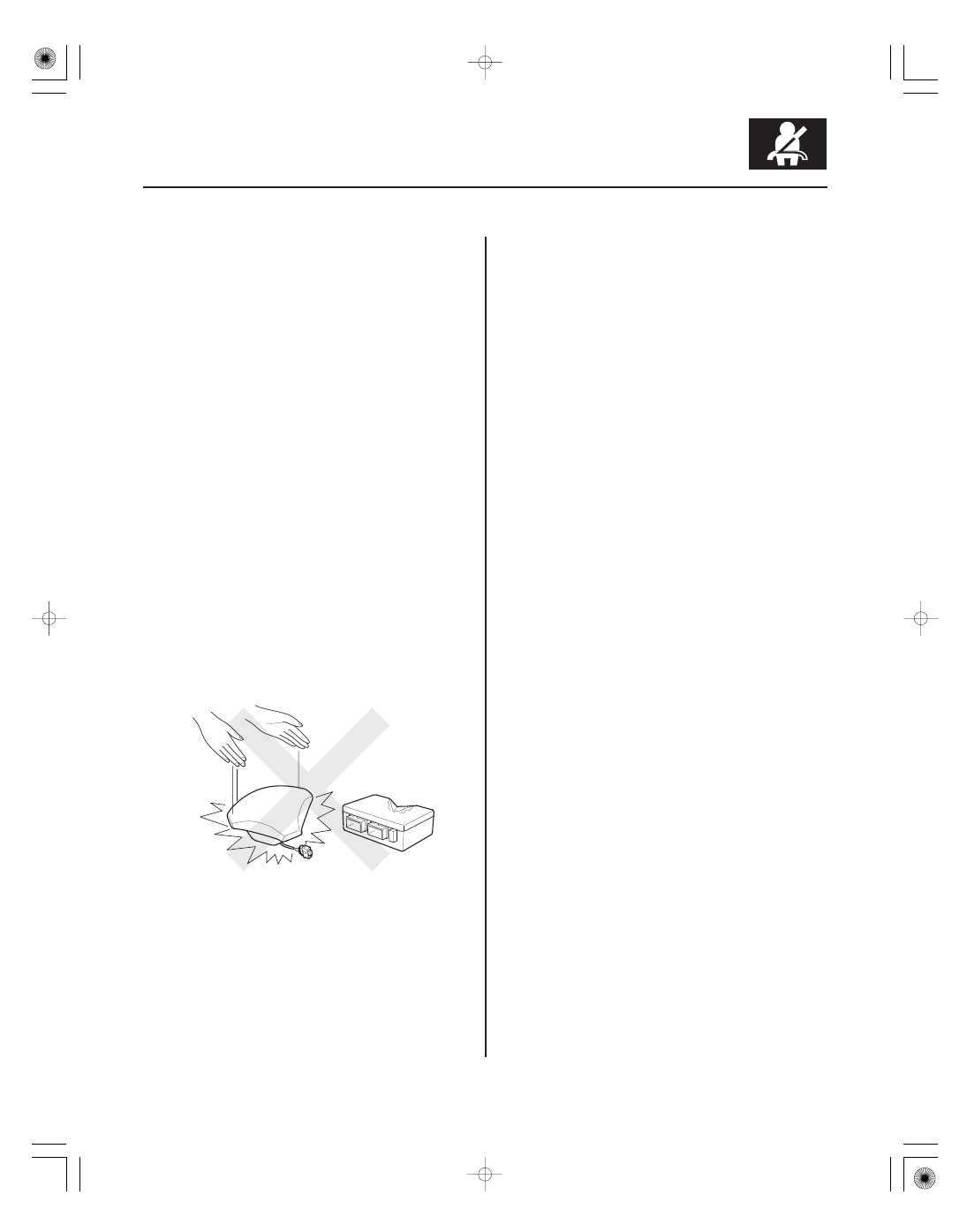Acura CSX. Manual - part 674

01
SNR9A00H46400000000AAAT00
General Precautions
Steering-related Precautions
Cable Reel Alignment
24-13
Precautions and Procedures
NOTE: Some systems store data in memory that is lost
when the battery is disconnected. Before disconnecting
the battery, refer to Battery Terminal Disconnection and
Reconnection (see page 22-68).
Please read the following precautions carefully before
servicing the airbag system. If the instructions
described in this manual are not properly followed, or
the airbags could accidentally deploy and cause
damage or injuries.
• Except when doing electrical inspections, always turn
the ignition switch to LOCK (0), disconnect the
negative cable from the battery, then wait at least
3 minutes before starting work.
NOTE: The SRS memory is not cleared even if the
ignition switch is turned to LOCK (0), or the battery
cables are disconnected from the battery.
• Use replacement parts which are manufactured to the
same standards and quality as the original parts. Do
not install used SRS parts. Use only new parts when
making SRS repairs.
• Carefully inspect any SRS part before you install it.
Do not install any part that shows signs of being
dropped or improperly handled, such as dents, cracks
or deformation.
• Before disconnecting the SRS unit connectors,
always disconnect the appropriate SRS parts
connectors.
• Use only a digital multimeter to check the system. If it
is not a Honda multimeter, make sure its output is
10 mA (0.01 A) or less when switched to the lowest
value in the ohmmeter range. A tester with a higher
output could cause accidental deployment and
possible injury.
• Do not put objects on the front passenger’s airbag.
• The original audio and navigation system have a
coded theft protection circuit. Make sure you have the
anti-theft codes for the audio system or navigation
system (if equipped), then write down the audio
presets before disconnecting the negative cable from
the battery.
• Before returning the vehicle to the client, enter the
anti-theft codes for the audio system or navigation
system (if equipped), then enter the audio presets; set
the clock.
• Misalignment of the cable reel could cause an open in
the wiring, making the SRS system, remote steering
wheel controls, or the horn inoperative. Center the
cable reel whenever you do the following (see step 6
on page 24-202).
– Installation of the steering wheel
– Installation of the cable reel
– Installation of the steering column
– Other steering-related adjustment or installation
• Do not disassemble the cable reel.
• Do not apply grease to the cable reel.
• If the cable reel shows any signs of damage, replace
it with a new one. For example, if the cable reel does
not rotate smoothly, replace it.
08/08/21 13:54:18 61SNR030_240_0013